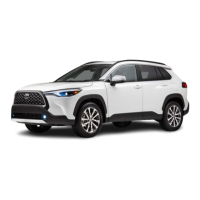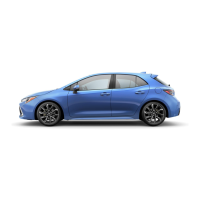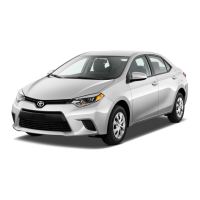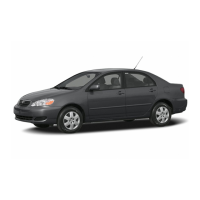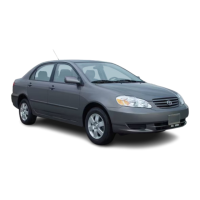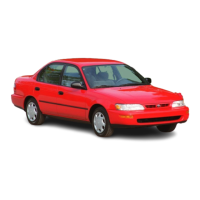271
4-5. Using the driving support systems
4
Driving
● If objects draw too close to the
sensor.
● When a pedestrian is wearing
clothing that does not reflect ultra-
sonic waves (ex. skirts with gath-
ers or frills).
● When objects that are not perpen-
dicular to the ground, not perpen-
dicular to the vehicle traveling
direction, uneven, or waving are in
the detection range.
● Strong wind is blowing
● When driving in inclement weather
such as fog, snow or a sandstorm
● When an object that cannot be
detected is between the vehicle
and a detected object
● If an object such as a vehicle,
motorcycle, bicycle or pedestrian
cuts in front of the vehicle or runs
out from the side of the vehicle
● If the orientation of a sensor has
been changed due to a collision or
other impact
● When equipment that may
obstruct a sensor is installed, such
as a towing eyelet, bumper pro-
tector (an additional trim strip,
etc.), bicycle carrier, or snow plow
● If the front of the vehicle is raised
or lowered due to the carried load
● If the vehicle cannot be driven in a
stable manner, such as when the
vehicle has been in an accident or
is malfunctioning
● When a tire chains or compact
spare tire is used
■ Situations in which the system
may operate even if there is no
possibility of a collision
In some situations, such as the fol-
lowing, the system may operate
even though there is no possibility of
a collision.
● When driving on a narrow road
● When driving toward a banner,
flag, low-hanging branch or boom
barrier (such as those used at rail-
road crossings, toll gates and
parking lots)
● When there is a rut or hole in the
surface of the road
● When driving on a metal cover
(grating), such as those used for
drainage ditches
● When driving up or down a steep
slope
● If a sensor is hit by a large amount
of water, such as when driving on
a flooded road
● There is dirt, snow, water drops or
ice on a sensor. (Cleaning the
sensors will resolve this problem.)
● A sensor is coated with a sheet of
spray or heavy rain
● When driving in inclement weather
such as fog, snow or a sandstorm
● When strong winds are blowing
● When vehicle horns, vehicle
detectors, motorcycle engines, air
brakes of large vehicles, the clear-
ance sonar of other vehicles or
other devices which produce ultra-
sonic waves are near the vehicle
● If the front of the vehicle is raised
or lowered due to the carried load

